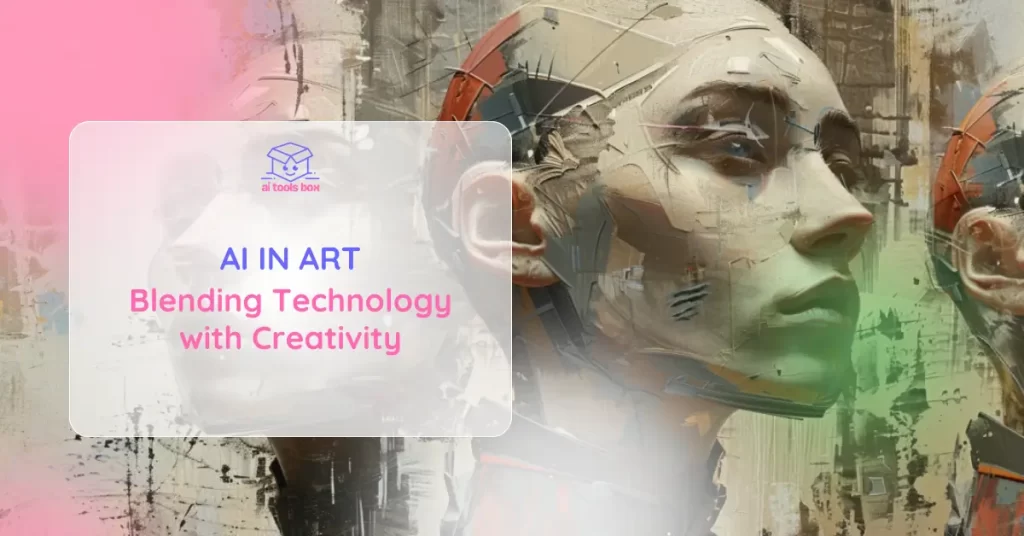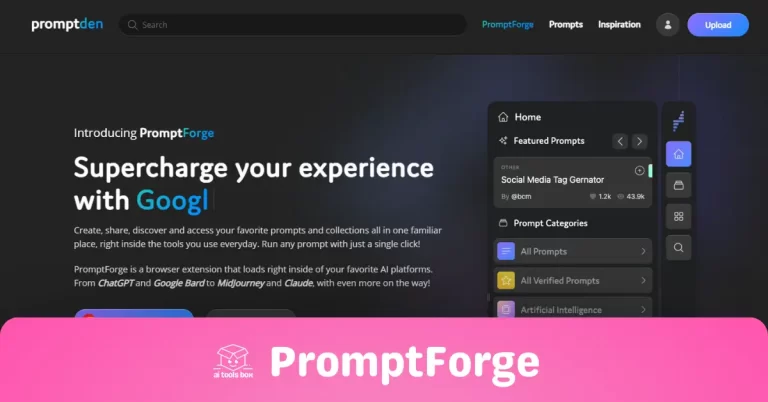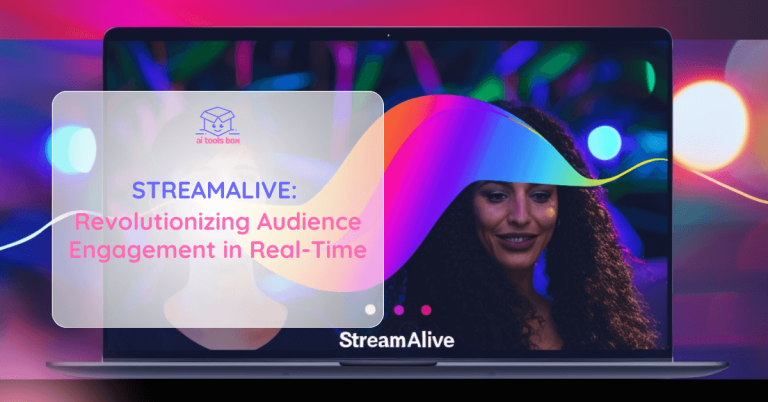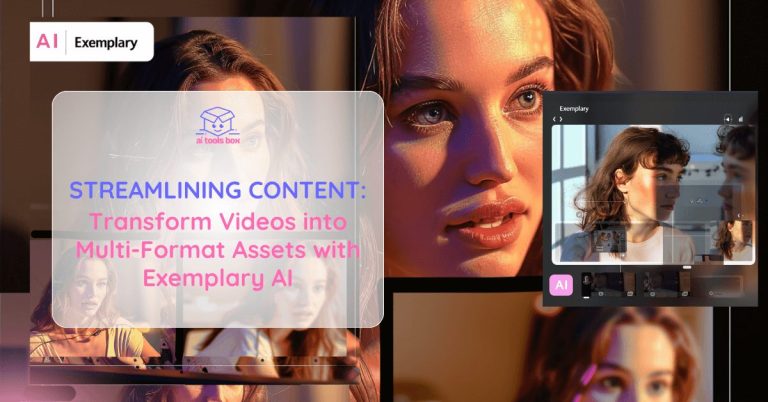The intersection of artificial intelligence and art represents a fascinating frontier in the evolution of creative expression. Far beyond merely a convergence of two fields, this amalgamation heralds a new paradigm where the boundaries of art are continually expanded and redefined. As we embark on this exploration, it's crucial to acknowledge that the interplay between technology and creativity is not a novel phenomenon. Instead, it's the latest chapter in a long history of artistic innovation spurred by technological advancements.
In this context, the advent of artificial intelligence as a medium in the art world provokes profound questions about the nature of creativity and the role of the artist in the creative process.
What constitutes artistic authorship when an AI creates based on algorithms and data?
How do we value creations created with the assistance of AI and what does this mean for the future of artistic expression?
By examining these questions, we aim to delve deeper into this nuanced relationship, understanding not just the technical mechanics, but also the broader implications for artists, enthusiasts and the community at large. This exploration is not just about charting the impact of AI, it’s about understanding how this intersection reshapes our very conception.
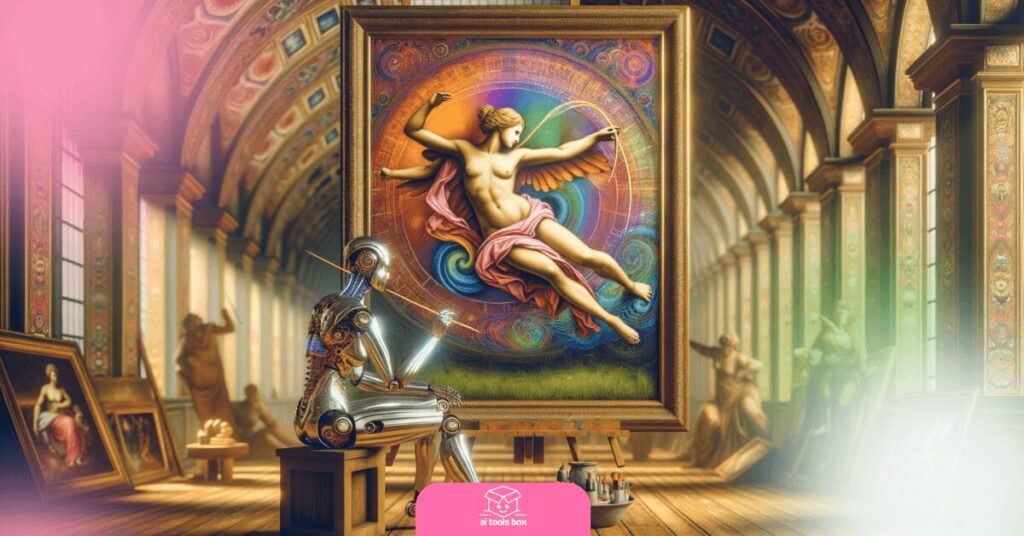
Brief History of Technological Innovations in Art
The relationship between technology and art has always been dynamic and transformative.
From the early use of perspective drawing to create depth and realism during the Renaissance, to the introduction of camera obscura, which revolutionized the understanding of light and shadow, technology has continually provided artists with new tools and methodologies to express their vision.
In the 20th century, the emergence of photography and cinema as art forms further exemplified how technological advancements could create entirely new genres of artistic expression.
Historical Parallels in Artistic Adoption of New Technologies
The apprehension and excitement surrounding AI find echoes in past technological milestones.
- The invention of the daguerreotype in the 19th century, for example, sparked debates about the end of painting, yet it eventually led to the expansion of artistic subjects and styles.
- Similarly, the advent of digital art in the late 20th century was initially met with skepticism but has since become a well-established genre. These historical precedents highlight a pattern of initial resistance followed by adaptation and integration, suggesting that the emergence of AI, while disruptive, is part of a continuum of technological innovation driving artistic evolution.
By examining AI's dual role and drawing lessons from history, we can better appreciate the transformative potential of AI in art. This perspective not only reassures us about the enduring value of human creativity but also excites us about the new possibilities for artistic expression in an age where technology and art are increasingly intertwined.
The Future of Creative Processes in the Age of AI
The dialogue is ongoing, with each new development providing fresh insights into the possibilities and challenges at this intersection. This conversation is not confined to the creative world alone, it resonates across all sectors where creativity and technology intersect, promising a future rich with innovation and new forms of expression that continue to challenge, delight, and inspire.
The integration of AI into the art world signals a transformation that extends well beyond the adoption of a new set of tools. It represents a shift in the very essence of how art is conceptualized, created, and interacted with. This section delves into the dual roles of AI — both as a tool and as a collaborator—while drawing historical parallels to underscore the continuity of technological influence on artistic expression.
AI: Tool vs. Collaborator
Traditionally, the artistic tools — whether brushes, chisels, or cameras—have been inert, requiring the artist's hand and mind to bring artworks to life. However, AI challenges this paradigm.
- As a tool, AI offers unprecedented capabilities in processing and generating complex patterns, enabling artists to explore new aesthetic territories. Yet, AI's role is not confined to that of a passive instrument.
- As a collaborator, AI introduces an element of autonomy, capable of making creative decisions based on its programming and the data it has been fed. This blurring of lines between tool and collaborator invites us to reconsider the nature of artistic creation and the definition of art itself.
The Role of AI in Shaping Artistic Expression
As artificial intelligence becomes increasingly sophisticated, its impact on artistic expression grows ever more profound. This influence is manifesting in several key areas: the expansion of creative possibilities, the redefinition of the artist's role, and the emergence of new art forms. This section explores how AI is reshaping the landscape of artistic creation, offering a glimpse into a future where the fusion of technology and creativity opens new frontiers of expression.
Specific Examples of AI in Creation
AI's capacity to analyze vast datasets and identify patterns has led to the development of tools that can mimic a range of artistic styles, from classical to contemporary.
- For instance, GANs (Generative Adversarial Networks) have been used to create artworks that are indistinguishable from those produced by human hands, challenging our perceptions of creativity and originality.
- Projects like DeepDream, initiated by Google, utilize neural networks to transform photographs into surreal, dream-like images, showcasing AI's ability to generate visually striking and entirely new aesthetic experiences.
Artist Perspectives on AI’s Influence
Artists working with AI often describe the technology as a catalyst for expanding their creative vision.
- Refik Anadol, a media artist and director, utilizes AI to create immersive environmental installations that blend architecture, data, and machine learning, offering audiences new ways to experience the interplay of space and information.
- Similarly, Sougwen Chung, an artist exploring the dynamics between humans and machines, engages in performances where she draws in tandem with robotic arms, blurring the lines between creator and tool, and highlighting the collaborative potential of AI in the creative process.
These examples underscore the diversity of AI’s applications and the myriad ways in which artists are harnessing the technology to push the boundaries of what is possible. Far from replacing the artist, AI emerges as a powerful partner in the creation of new forms of art that challenge and expand our aesthetic horizons.
By enabling novel expressions and fostering collaborations between humans and machines, AI is not only transforming the tools of art but also redefining the very nature of artistic creativity. This evolution reflects a broader shift towards a more inclusive understanding of art, where the value lies not in the medium or the maker but in the capacity to evoke emotion, provoke thought, and reflect the complexities of the human experience.
Case Studies: Renowned AI Creative Projects and their Impact
Exploring the impact of artificial intelligence through specific case studies reveals the technology's versatility and its capacity to redefine norms. From recreating classical art to inventing entirely new aesthetics, AI has demonstrated its role as a powerful force in the artistic domain. This section highlights two pivotal projects that exemplify the breadth of AI's influence on art.
Comparative Analysis of AI Artistic Methodologies
- The Next Rembrandt: A groundbreaking project that bridged historical art with modern technology, “The Next Rembrandt” used machine learning to analyze the works of Rembrandt van Rijn. By studying the master's use of geometry, composition, and lighting, AI was able to generate a new piece that mimicked Rembrandt's style with remarkable accuracy. This project not only showcased AI's ability to learn from and replicate historical artistic techniques but also sparked a debate on the originality and authenticity of machine-generated art.
- Google's DeepDream: On the other end of the spectrum, Google's DeepDream represents a venture into the creation of entirely new visual experiences through AI. By applying a neural network originally designed to recognize images, DeepDream modifies photographs to produce surreal, dream-like visuals that reveal the algorithm's “interpretation” of the scenery. This project illustrates AI's potential to not just replicate existing art forms but to create novel artistic expressions that challenge human perceptions of reality and beauty.
Spotlight on Emerging AI Projects in Creativity
In addition to these well-known projects, emerging endeavors continue to push the envelope.
For example AI Ami, explores the collaborative potential between human artists and AI. This project involves AI generating creative suggestions based on the artist's initial inputs, which the artist then integrates into their work. Such collaborations underscore the evolving role of AI from a tool to a creative partner, capable of contributing ideas that can inspire new directions.
These case studies underscore the dual nature of AI's impact on art: as a means to extend traditional practices into the digital age and as a source of entirely new forms of creative expression. By doing so, AI not only challenges our definitions of art and creativity but also enriches the artistic landscape with new possibilities for innovation and exploration.
Digital and AI Paintings: A New Creative Landscape
The advent of artificial intelligence has catalyzed a renaissance in digital space, leading to the emergence of AI paintings and a transformative creative landscape. This shift not only introduces new mediums and techniques but also redefines the interaction between artist and canvas. By blending algorithmic complexity with artistic vision, AI is not just expanding the toolkit available to artists, it is creating a new paradigm.
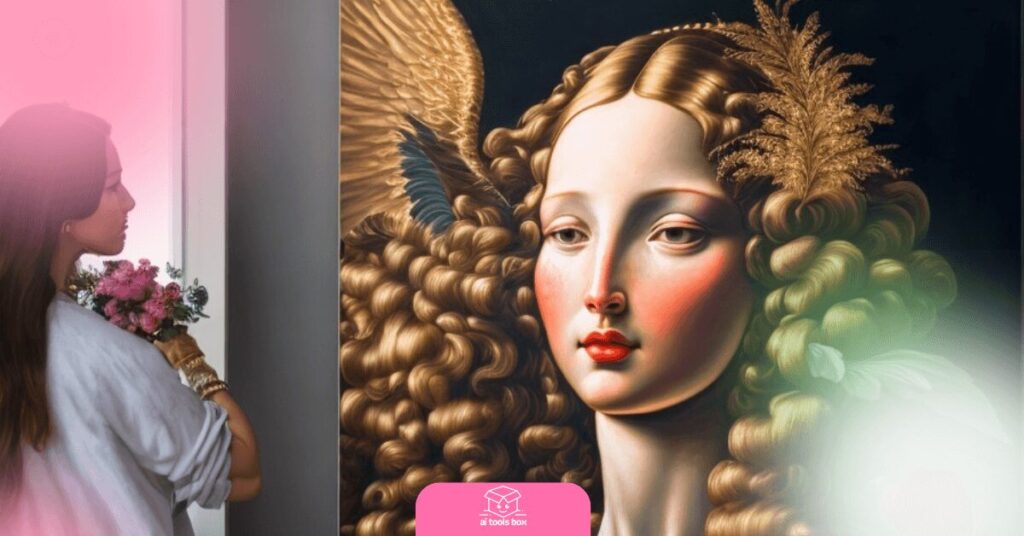
Reception of Digital Creations in the Creative Community and Markets
The reception of digital and AI paintings within the community and broader markets has been mixed, yet increasingly positive. Initially met with skepticism, digital artworks has gained legitimacy and recognition, with AI paintings being featured in prestigious galleries and auctions.
For instance, the sale of an AI-generated portrait at Christie’s for an astonishing $432,500 marked a watershed moment, signaling the market's readiness to embrace and value digital art. This acceptance reflects a growing recognition of the skill, innovation, and creativity involved in digital artistry, challenging traditional notions of value and authenticity in the art world.
Technical Challenges in AI Creativity
Creating art with AI involves navigating a range of technical challenges, from algorithm design to data curation. Artists must not only possess a deep understanding of the technologies they use but also be adept at steering the creative process within the bounds of these tools. For example, training AI requires vast datasets of images, raising questions about copyright and the ethics of data use. Furthermore, the unpredictable nature of AI can lead to unexpected outcomes, requiring artists to adapt their vision in response to the machine's contributions. Despite these challenges, or perhaps because of them, artists are finding innovative ways to merge technical constraints with creative goals, producing works that push the boundaries of what is considered possible in art.
The emergence of digital art and AI paintings represents more than just the adoption of new technologies; it signifies a shift in the very fabric of artistic creation. As artists and machines collaborate to explore uncharted territories of expression, the landscape of art continues to evolve, reflecting the complexities and possibilities of our increasingly digital world. This new era of art not only broadens our aesthetic horizons but also challenges us to reconsider our definitions of creativity, authorship, and the essence of art itself.
The Impact of AI on the Artistic Process and Creative Freedom
The integration of artificial intelligence into the art world is not just altering the landscape of artistic creation, it's revolutionizing the very processes through which art is conceived and realized. This paradigm shift extends creative freedom, pushing the boundaries of what artists can achieve while also introducing new considerations and challenges.

AI’s Unexpected Contributions to Creative Discovery
Artists engaging with AI often find that the technology brings unexpected contributions to their creative process. AI can introduce novel patterns, textures, and compositions that artists might not have envisioned independently. For example, when using AI algorithms to generate visual content, the outcomes can surprise and inspire artists, leading them to explore directions in their work that they had not previously considered. This serendipitous aspect of working with AI underscores its role not merely as a tool but as a source of creative inspiration that can broaden an artist's expressive range.
Democratizing Creation through AI Tools
AI technologies have the potential to democratize the art creation process, making it accessible to a wider range of individuals. By automating certain aspects of the creative process, AI can level the playing field, allowing emerging artists and those without formal training to realize their creative visions.
Platforms and software that offer AI-driven design and art creation tools are lowering the barriers to entry, enabling more people to participate in the artistic conversation. This democratization not only diversifies the range of voices within the art world but also challenges traditional gatekeepers of artistic merit and value.
The impact of AI on the artistic process and creative freedom is profound and multifaceted. By offering new avenues for exploration and lowering barriers to entry, AI is expanding the universe of artistic possibility. However, this expansion also comes with challenges, including ethical considerations around data use and questions about the nature of creativity. Despite these challenges, the integration of AI into the arts is a testament to the enduring human drive to explore and express, a drive that continuously seeks out new frontiers and modes of expression.
As we navigate this new landscape, the relationship between artists and AI continues to evolve, shaped by ongoing experimentation, dialogue, and reflection. The result is a dynamic and ever-expanding field of art that reflects the complexities of our contemporary world, highlighting the unique potential of AI to enrich and extend the human capacity for creativity.
Artistic Innovation: Pushing the Boundaries with AI
The embrace of artificial intelligence in the art world is not merely a testament to technological advancement but a beacon of artistic innovation. AI challenges conventional norms and paves the way for new modes of expression, redefining the essence of creativity and expanding the horizons of artistic exploration.

Ethical Implications of Artistic Innovations via AI
As AI-driven art continues to evolve, it raises profound ethical questions. The use of machine learning algorithms to generate art prompts debates on the originality and authenticity of AI-created works.
Issues of copyright and intellectual property become increasingly complex when AI synthesizes and reinterprets existing artworks. Furthermore, the potential for AI to replicate the styles of living or recently deceased artists introduces concerns about respect for artistic legacy and the implications for artists' livelihoods.
Navigating these ethical waters requires a nuanced understanding of both technology and the legal frameworks that govern artistic creation. As the field progresses, ongoing dialogue among artists, technologists, legal experts, and the public will be crucial in shaping ethical guidelines that foster innovation while respecting individual rights and cultural heritage.
Innovative Techniques: How AI is Expanding Artistic Horizons
AI introduces techniques that were unimaginable in the traditional art world, such as algorithmic pattern generation and neural network-based style transfers. These techniques enable the creation of complex, layered works that challenge existing aesthetic norms. For instance, Generative Adversarial Networks (GANs) can produce hyper-realistic images or entirely novel visuals, blurring the line between the digital and the physical, the real and the imagined.
This technological innovation extends the artist's palette, offering new textures, forms, and conceptual frameworks within which to work. Artists are increasingly leveraging these capabilities to push the boundaries of what is considered possible, creating artworks that captivate, challenge, and inspire.
AI as a Collaborative Partner: Examples of Human-AI Collaboration
The evolving role of AI highlights its potential as a collaborative partner, enriching the creative process with its unique capabilities. Projects like “AI Ami” exemplify this partnership, where AI-generated suggestions are melded with human creativity to produce works that are neither entirely human nor machine-made. These collaborations underscore the complementary strengths of humans and machines— intuition, emotion, and subjective interpretation on one side, and speed, pattern recognition, and computational power on the other.

Such partnerships not only expand the scope of what artists can achieve but also provoke deeper reflections on the nature of creativity itself. By working alongside AI, artists explore new facets of their own creative processes, discovering fresh avenues of expression that bridge the gap between technology and human emotion.
As we delve deeper into the realm of AI-driven art, the innovative techniques and collaborative opportunities presented by AI serve as powerful catalysts for artistic exploration. These developments not only enrich the art world but also offer profound insights into the relationship between humans and technology, challenging us to reimagine the boundaries of creativity in the age of artificial intelligence.
Ethical and Aesthetic Considerations
The ascendancy of AI brings to the forefront a host of ethical and aesthetic considerations that challenge traditional norms and provoke spirited debate. As AI reshapes the boundaries, it compels us to reconsider our notions of authorship, originality, and the value.
Structured Debate on Key Ethical Issues
The question of authorship in AI-generated creations is particularly contentious. When an artwork is produced by an algorithm, to whom does it belong—the creator of the algorithm, the machine, or the individual who selected the inputs? This debate extends into the realm of copyright, as AI can produce works that are derivative yet distinct from existing art, complicating traditional copyright frameworks.
Furthermore, the ability of AI to replicate and potentially saturate the market with art that mimics the style of established artists raises concerns about devaluation of human-created works and the potential for economic impact on artists’ livelihoods. These discussions are crucial for developing an ethical framework that respects both the innovative potential of AI and the rights and contributions of human artists.
Legal and Regulatory Considerations
Addressing these ethical debates necessitates thoughtful legal and regulatory responses. As of now, copyright laws in many jurisdictions are ill-equipped to handle the nuances of AI-generated projects, leading to legal gray areas and uncertainty for artists and creators. Developing legislation that can adapt to the evolving landscape of AI requires a delicate balance between encouraging innovation and protecting intellectual property and artistic integrity.
Aesthetic Value
Beyond the ethical implications, the aesthetic value is a subject of vibrant discourse. Critics and enthusiasts alike ponder whether art created by AI can convey the depth of emotion and meaning typically associated with human-made art. While some view AI art as lacking the intentional emotional engagement of traditional art, others argue that it represents a new form of artistic expression that challenges our perceptions and expands the definition of art.
The aesthetic debate also intersects with questions of accessibility and inclusivity, as AI has the potential to democratize creation and appreciation. By making creative work more accessible and offering new tools for expression, AI could broaden the audience for create and foster a more inclusive world for them.
The Future of Ai in Creative Processes
As we delve into the intersection of AI and creativeness, it's clear that this confluence is more than a mere trend—it heralds a new era in artistic exploration. From the transformation of traditional practices to the emergence of groundbreaking techniques and ethical debates, AI is undeniably reshaping the creative world. Through this journey, we've uncovered the transformative impact of AI, from augmenting the creative process to challenging our very notions of what it can be.
The exploration of AI raises profound questions about creativity, authorship, and the value of artworks, prompting a reevaluation of established norms and encouraging a broader discourse about the future of artistic expression. As technology continues to evolve, so too will the ways in which we create, interpret, and engage with creativity, promising a future where the boundaries of creativity are continually expanded and redefined.
In this dynamic landscape, the fusion of AI and creativity stands as a testament to human ingenuity and the perpetual quest for new modes of expression. It underscores the boundless potential of combining technology with creativity, pointing towards a horizon brimming with possibilities for innovation, exploration, and new understanding.
